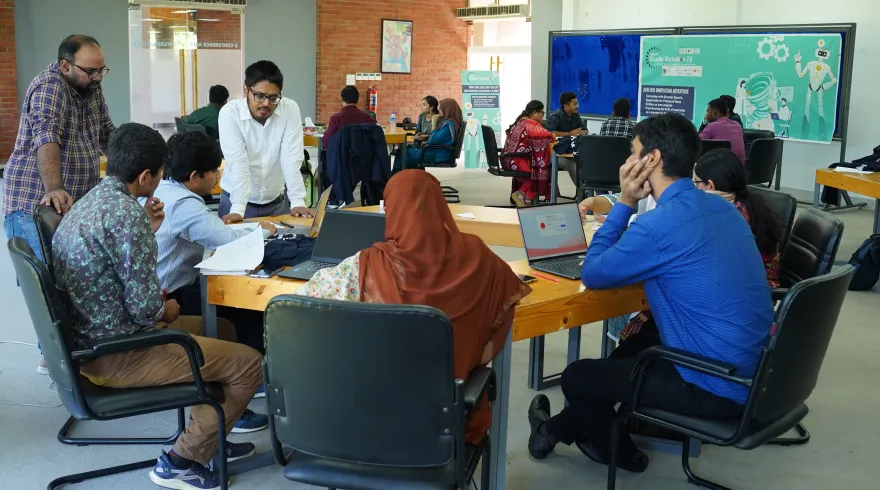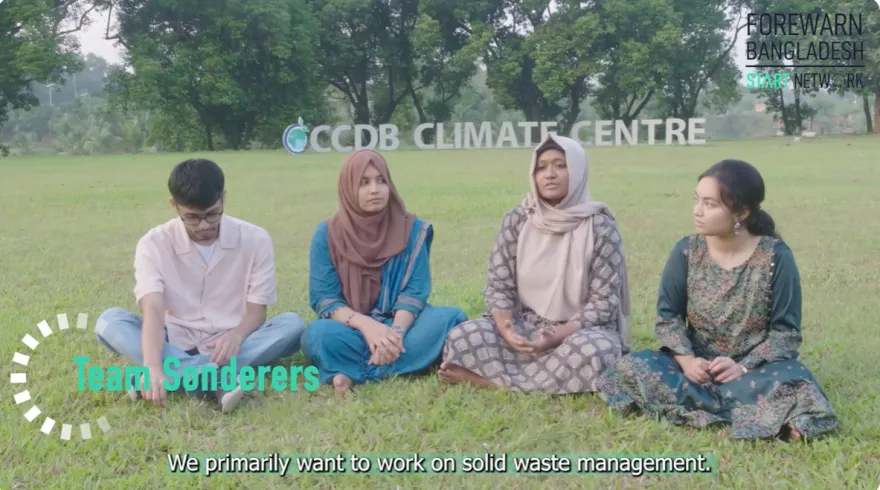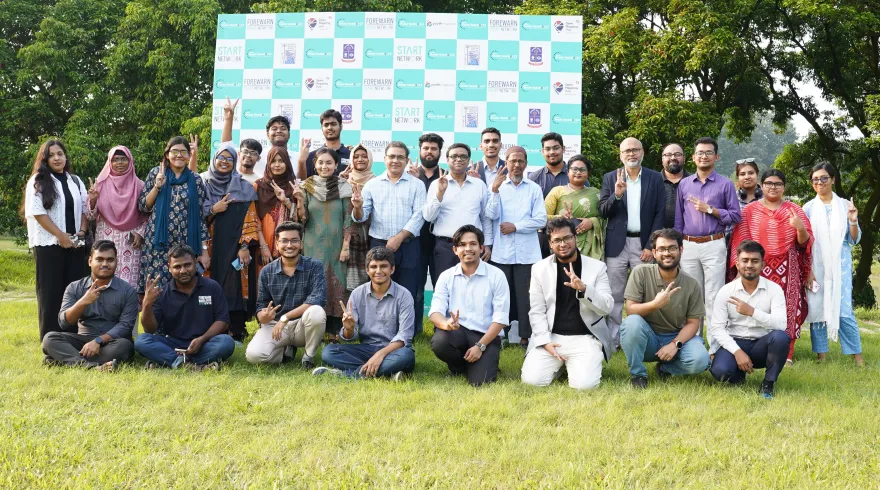Bangladesh’s unique deltaic landscape makes it highly exposed to natural hazards including cyclones, floods, riverbank erosion, heatwaves, droughts, and landslides. Frequently these hazards become disasters that disrupt lives and cause significant economic losses. As climate change accelerates, these hazards could become more frequent, severe and unpredictable, calling for collaborative solutions from experts, practitioners, and youth to strengthen disaster management efforts.
The FOREWARN Bangladesh Disaster Hackathon 2.0, held in September 2024, ignited energy, creativity, and enthusiasm among young innovators from across Bangladesh. This dynamic initiative went beyond idea generation, serving as a catalyst for groundbreaking local solutions to address critical disaster risk management challenges. More than just a competition, the Hackathon demonstrated the immense value of youth-driven, community-centred solutions, showcasing how young innovators can take the lead in shaping disaster preparedness and management.

University students and graduates passionate about tackling some of the largest disaster management issues facing Bangladesh participated in designing, developing and showcasing solutions rooted in technology, creativity and collaboration. The hackathon journey spanned from April to September 2024, where youth translated theoretical knowledge into actionable ideas, guided by relevant mentors, experts, and policymakers. Participants were provided the opportunity to significantly enhance their practical and technical skills, developing insights into real-world disaster risk management scenarios.
The proposed solutions have introduced innovative approaches to existing challenges while also sparking new dialogue on resilience, preparedness, and early action between young people, experts and practitioner communities in Bangladesh. The hope is that these solutions will foster and shape future disaster management practices while inspiring continued youth and community engagement, setting a precedent for disaster risk management in Bangladesh and beyond.

As we look back at Disaster Hackathon 2.0, we celebrate the enthusiasm, innovation, and determination of the young people leading Bangladesh toward a more resilient future.
The top 5 solutions of the Disaster Hackathon 2.0:
| Team Name | The Challenge | Team Ideas | Objective |
|---|---|---|---|
| Coastline Defenders | Riverbank erosion threatens agriculture, livelihoods, and infrastructure in the Jamuna River basin. | Real-time erosion monitoring and early-warning system using satellite imagery, hydrological models, and machine learning. | Protect nature and resources through timely interventions. |
| Preventers | Rural coastal residents hesitate to evacuate during cyclones due to fear of looting. | Low-cost IoT system providing real-time weather updates and cyclone alerts. | Enhance disaster readiness and encourage timely evacuation. |
| Team SIDR | Cyclone evacuation compliance is low due to lack of precise risk-based guidance. | AI-driven disaster warning system with deep learning for cyclone prediction and LLM (Large Language Model)-based tailored guidance. | Improve cyclone forecasting and personalised evacuation guidance. |
| Team SONDERERS | Dhaka faces waste management issues causing clogged drainage, waterlogging, and disease spread. | Digital platform connecting residents with waste collectors for efficient waste disposal and incentives for collectors. | Reduce waste accumulation, prevent diseases, and support waste collectors. |
| Relief Tech Squad | Relief mismanagement occurs due to lack of transparency and coordination after disasters. | Relief sync platform to coordinate efforts among charitable organisations. | Optimise humanitarian aid distribution through better coordination. |

